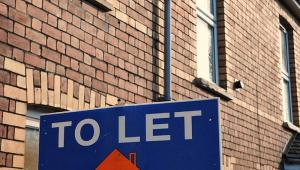The introduction of health and wellbeing boards and the new role of local authorities in tackling public health have been warmly welcomed within the sector. What could be wrong with seeking ways to integrate areas with similar goals, from health, social care, public health - plus the ongoing work to reduce health inequality?
Now, the next important stage for the boards is the advocacy of physical exercise and the establishment of clear strategies, underpinned by evidence-based action. One way forward would be for every local authority across the country to recognise the impact of physical inactivity and develop a dedicated strategy to address it in partnership with organisations from the public, private and third sectors.
It’s not like this moment hasn’t been coming. Back in 1999, the National Institute for Health and Clinical Excellence published a briefing paper on physical activity and inequalities which pointed out the need for cohesive partnerships to improve people's quality of life. The regulator called for this because 'reducing inequalities is not just the responsibility of the health sector'. Now in 2013, you would have hoped that we would have made further progress.
Increasingly, it is clear that the research is there. The British Medical Journal found in a recent trial involving 340,000 patients that only a third of people in England do their recommended activity every week – despite it being found that moderate-intensity exercise can reduce the risk of major illnesses such as stroke, heart disease, and cancer.
The fact that tackling physical inactivity offers potential savings in associated health costs is not lost on local authorities. And in 2004, the Department of Health stated that physical inactivity was costing the UK economy over £8.2bn per year through direct costs to the NHS, sickness absence and premature mortality with an inactive person spending 38% more days in hospital and visiting their doctor 5.5% more often than an active person.
These costs - put together with other disease-specific costs – are modelled to grow to over £50bn by 2050 making them unsustainable.
Put simply, if things do not change – if we do not act now - the NHS will go bankrupt and our children will not have a health service that is free at the point of use. In addition, local authorities will come under even greater pressure as a result of the subsequent strain on adult social care. This is an area where the cost of prevention is undoubtedly more attractive than the cost of the cure.
For our part, at ukactive we have sought to play a major part in formalising the link between councils and exercise professionals, subsequently saving the NHS money. Earlier this year, as part of our Let's Get Moving programme, we called for there to be an exercise professional in every GP surgery. This was after it was revealed that some 42% of GPs did not have access to a referral scheme for prescribing physical exercise. This is something that needs serious consideration by local authority commissioners.
Many health professionals are already on side and members of the public realise the benefits of exercise. However, given that the reforms which initially disrupted even the best efforts of making real progress on this agenda have now settled into place, we now have an unprecedented opportunity to act on reducing inactivity.
Once upon a time, the primary remit of local provision was simply around leisure facilities and safe parks. Now it is far more expansive. Councils are now responsible for much bigger issues such as public health and health inequalities. No doubt, this is an opportunity to force a reprioritisation towards dealing with inactive people, where the biggest health costs – and health improvements – can be found.
We know there is no one-size-fits-all model. The demographics of every part of the country bring a particular complexity in addressing the challenge that is physical inactivity. However, health inequality is an issue that affects all areas and if local commissioners advocate a greater focus on physical inactivity we will take an important step forward in tackling an ever-present problem.
Now is the time to ensure that physical inactivity rises to the top of the agenda within local public health teams. The rewards for acting and the consequences of not mean that it’s time to turn the tide of inactivity. Having local activity providers on the board and signed up to this collective strategy would be a monumental achievement.











